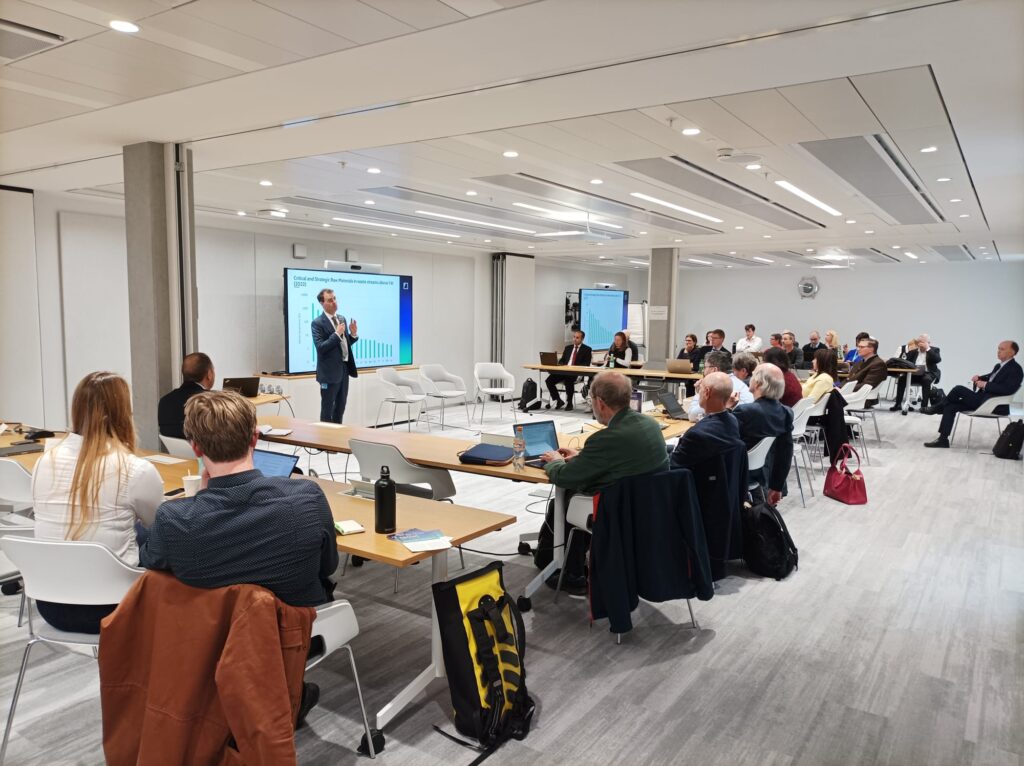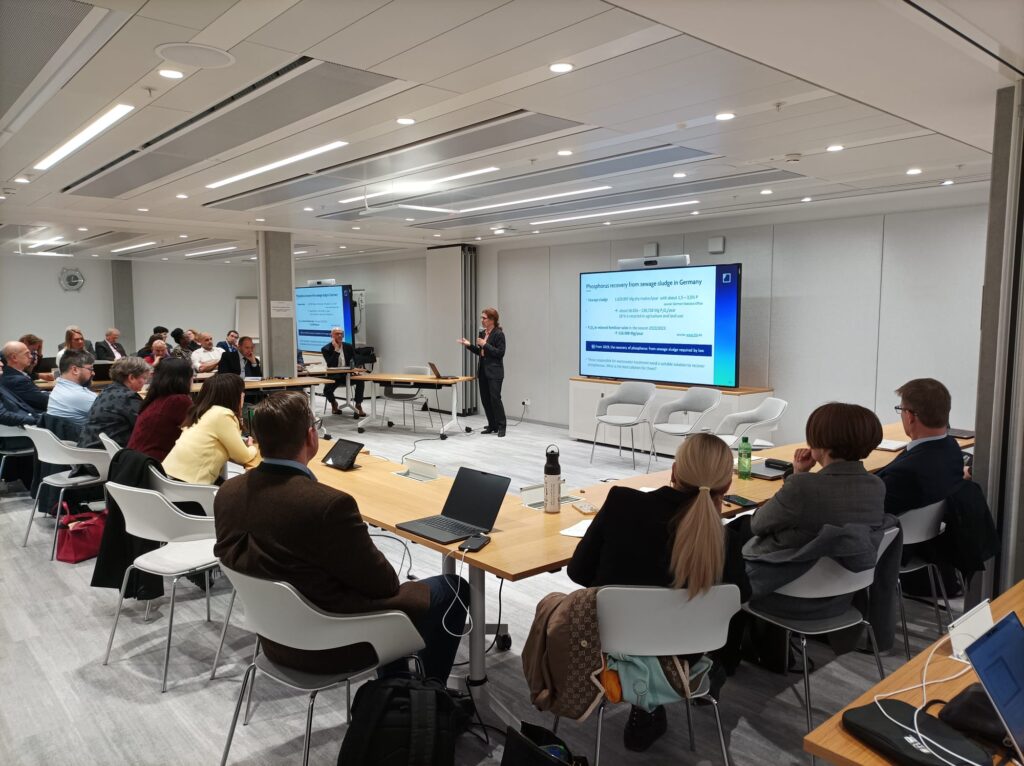

On 26 March 2025, the second annual event of FutuRaM took place as part of the UNECE Resource Management Week at the United Nations office in Geneva. Over 50 experts gathered to learn more about the project and its first results.
Kirsten Remmen of Empa introduced FutuRaM by explaining that the main motivation of the project is to emphasize the importance of reliable and complete data to model future secondary raw material stocks and flows to support legislation (e.g. the CRM Act). She also explained how the project identifies where the elements are in products by gathering data on the components and materials in which the elements are found; this is essential for improving the recovery potential. Finally, she outlined the three scenarios developed in FutuRaM as it plots changes in stocks and flows of materials to 2050 i.e. ‘Business-as-usual’, ‘Recovery’ and ‘Circularity’.
Kees Baldé of UNITAR revealed some of the first results of the data gathering process and how these could be useful to stakeholders wishing to understand more about the elements contained in products and where these might be found. He also outlined what the initial FutuRaM results tell us about which elements occur in the greatest quantities of the focus waste streams as well as those elements that occur in significant quantities relative to global extraction e.g. dysprosium, palladium and platinum all occur in end-of-life vehicles in quantities that are significant when viewed beside global demand.
The work on the recovery potential was also discussed as it is noted that in many cases only a small proportion of a critical raw material in a waste stream can be recovered due to recovery and collection losses, although this remains an important opportunity. To take the example of Neodymium: there are an estimated 1,200 tonnes of it sitting in European electronics waste, and although it is estimated that just 88 tonnes could potentially be recovered by 2030, this is still a significant and useful amount.
Soraya Heuss-Aßbichler, Professor of Mineralogy and Petrology at LMU showed how the UNFC methodology is being applied in practice to anthropogenic resources through FutuRaM case studies. FutuRaM is undertaking 19 case studies to test the UNFC methodology on secondary raw material projects and four of these were presented at the event:
- Mining waste case study by Ronald Arvidsson of SGU
- Timber recovery by Jonas Breidenbach of UCL
- Phosphorous recovery by Soraya Heuss-Aßbichler
- Battery recycling by her colleague Iman Dorri

In a panel session, Stéphane Bourg (OFREMI, BRGM, France) Kieran Campbell-Johnston (TNO, Netherlands) and Minja Marijanski (Proman Management, Austria) discussed, under the moderation of Erika Ingvald of UNECE, how FutuRaM can be useful to the national CRM Observatories established in Member States and with policy makers. Within this discussion it was suggested that building on and expanding the FutuRaM work after the end of the project will be important in assisting the CRM Observatories to fulfil their future ambitions.
There was useful discussion and comments received from the audience during and after the event, and the FutuRaM team is grateful for the input of stakeholders that attended, as this critical assessment is an important step in the project.
